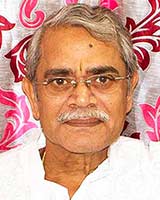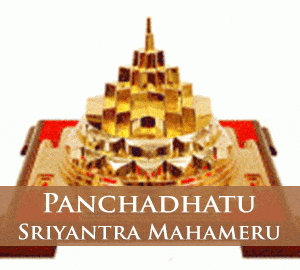SOMNATH LINGA
DIFFERENT NAMES OF SOMNATH
Parvati curiously asked Lord Shiva about the reason why Somnath was known by so many different names. Lord Shiva said- ‘ Since the time this divine linga first manifested itself very few blessed souls had the knowledge of it’s existence. Brahma has a life span of one kalpa at the end of which even he ceases to exist giving way to his successor- a new Brahma. In the same manner this divine Linga acquires a new name at the end of each kalpa. The present kalpa is seventh in order as six kalpas have already passed. The name of the present Brahma is Shatanand and this divine Linga is presently famous by the name of Somnath. Similarly it was famous as Mrityunjay during the time of Brahma named Virinchi. During second kalpa this Linga was famous as Kalagnirudra and the name of Brahma was Padmabhu. The third kalpa had Swayambhu as Brahma and the Linga was famous as Amritesh. The name of the fourth Brahma was Parmeshthi in fourth kalpa and the linga was famous as Annamay. In the same way the names of the fifth and sixth Brahma were Surajyeshtha and Hemagarbha respectively and the names of the Linga during their periods were Kritiwas and Bhairav Nath respectively.’
Lord Shiva also revealed to Parvati that the next kalpa- eighth in order would have Chaturmukh as Brahma and the divine Linga would be known as Pran Nath.Goddess Parvati then asked Shiva about the exact location of the Linga in Prabhas Kshetra. Lord Shiva told her that the sacrosanct place of Prabhas Kshetra was situated between the plains of two rivers Vajrini and Nyankumati. He also told her that the eternal Linga was not very far from the sea coast. Dwelling at length about the good fortunes of those living in Prabhas kshetra, Lord Shiva told her-‘ Anybody who does not abandon this holy place despite his hardships and troubles is certain to attain to my abode. One who has the good fortune of dying at Prabhas kshetra attains salvation. There will be prevalence of sins in Kaliyuga. As a result of this people would experience all sorts of hurdles and problems in their lives. To minimize their sorrows and to lessen their miseries, I have personally instructed Ganesh not to abandon this place even for a moment. Of all the Lingas present on the earth, Somnath is specially dear to me.’
SIDDHESHWAR LINGA AND SIDDHA LINGA
Describing the reason why this sacrosanct place was named Prabhas, Lord Shiva told Parvati- ‘ I dwell in the entire area stretching between the ocean in the south and river Kaureshwari. Being situated at the western coast, this entire area is radiated by Surya’s light for a relatively longer period of time and hence it has been named ‘Prabhas’ meaning luster. This is the reason why there is situated a grand temple of Lord Surya in Prabhas Kshetra. Not far from this Surya temple is situated a magnificent temple of Lord Siddheshwar, which was famously known as Jaigishavyeshwar in ancient times.’
Lord Shiva then went on to describe why Siddheshwar was called Jaigishavyeshwar during ancient times-‘ There lived a sage named Jaigishavya in previous kalpa. He used to daily worship a Shiva linga named Mahoday, which had manifested on its own. Keeping in view Shiva’s fondness for ashes, he used to smear it on his body hoping to please his deity. Not only this he even slept on ashes. He thus led an extremely austere life. At last he was able to please Lord Mahoday by his devotion. When Lord Mahoday appeared before him and expressed his willingness to fulfill anything he wished but Jaigishavya wanted nothing but total devotion in his deity (Mahoday). Lord Mahoday blessed him with immortality and said-‘ There would be nobody as powerful as you. Your feats achieved in spiritual things will be unmatched and you would become famous as ‘Yogacharya’ or teacher of Yoga. One who regularly worships this particular Linga which you have been worshipping with such deep devotion till now is certain to get absolved of all his sins.’ Having blessed Yaigishavya thus, Lord Mahoday disappeared from his sight. After this incident, Mahoday linga also came to be known as Yaigishavyeshwar. In course of time, when the Kaliyuga of that Kalpa arrived, some sages named ‘Balkhilyas’ had gone to the same place and worshipped Lord Mahoday. Similarly, many more sages went there and attained ‘siddhi’ or accomplishment. This is how this Linga came to be known as ‘Siddheshwar’ (the lord of all accomplishments). There are many holy places in the vicinity like Siddha linga, which was installed by lord Surya. Anybody who worships this linga on the auspicious day of trayodashi of the bright half of the hindu month Chaitra attains virtues similar to the accomplishment of ‘Pundareek Yagya’.
CHANDRA DEVA EULOGIZES SHIVA
Parvati asked Lord Shiva about the reason Chandra deva had to install a Shiva linga at Prabhas Kshetra. Lord Shiva replied that Daksha had got married twenty seven of his daughters to Chandra Deva. Chandra Deva was very attached to Rohini, who was one of them and neglected others. When Daksha came to know about this he cursed Chandra Deva as the result of which he lost his luster and started waning day by day. The worried Chandra Deva did an austere penance for thousand of years to please Lord Shiva. At last Lord Shiva became pleased and appeared before him. Subsequently, Chandra Deva got a divine Shiva linga installed by Brahma and worshipped it for thousand of years. Lord Shiva appeared once again and expressed his willingness to fulfill any wish Chandra Deva expressed. Chandra Deva requested Lord Shiva to dwell in the very Shiva Linga he had been worshipping till then. Lord Shiva revealed to him that there was no question of dwelling in the Shiva Linga as he had never abandoned it in the first place. Chandra Deva had regained his luster on account of his arduous penance. Lord Shiva blessed him and said- ‘ Since you have regained your luster (Prabha) by dint of your austere penance, this holy place will become famous as ‘Prabhas Kshetra’. This Linga would be named upon you and become famous as Somnath Linga.’
Having blessed Chandra Deva thus, Lord Shiva disappeared. Later on Chandra Deva instructed Vishwakarma to build a magnificent temple at the sight. He also built a city nearby so that all the priests who were supposed to supervise the rituals of worship could live there.
THE SIGNIFICANCE OF GETTING ONE’S HEAD TONSURED
Dwelling on length about the significance of getting one’s head tonsured at holy places, Lord Shiva told Parvati-‘ A man should get his head tonsured whenever he gets an opportunity to visit a holy place because hair are believed to contain all the sins he has committed. There is a holy place called Padma teerth, not far from Somnath temple. A devotee should first get his hair removed at Somnath teerth and then immerse them at Padma teerth. This way he becomes absolved of all his sins. Women should have a symbolical cut of their hair. It is necessary to perform the rituals of tarpan in the names of ancestors after the head tonsuring ceremony. According to the scriptures, an ocean is considered holy and nobody should its holy water in an impure state. While bathing a devotee should chant the following mantra-
‘Om namo Vishnu guptaaya Vishnu rupaaya namah;
Saannidhye bhava devesh saagare lavanaambhasi.’
There are about five crore Shivalingas submerged in the ocean near Somnath. There are also other holy places situated nearby like Agnikunda, Padma sarovar etc.
THE EMERGENCE OF SARASWATI IN PRABHAS KSHETRA
On being asked by Parvati about the emergence of river Saraswati at Prabhas Kshetra, Lord Shiva narrated the following tale to her-‘ The holy Sarswati flowing in Prabhas kshetra constitutes of five different streams- Harini, Vajrini, Nyanku, Kapila and Saraswati. Lord Vishnu once instructed Saraswati to carry ‘Badwanal’ (Submarine fire) and dump it in the ocean near Prabhas kshetra. After taking permission from Lord Brahma, her father Saraswati flew towards her destination. Ganga became sad at her departure so she asked her as to how could she have a glimpse of her now that she was going to such a distant place. Saraswati consoled Ganga by saying that she would be able to see her whenever she looked eastwards. The swift currents of Saraswati penetrated the earth and reached Patal Loka carrying Badwanal along with her.She continued to move beneath the ground towards her destination. As she reached Prabhas Kashetra, four learned sages, who were well versed in Vedas arrived there and invoked Saraswati to give them the privilege of separate bath by dividing herself in four different streams.
The names of these sages were Hiranya, Vajra, Nyanku and Kapil. While Saraswati was about to comply with their request, suddenly Samudra arrived there and he too expressed the same wish. Thus Saraswati divided herself into five different streams- Harini, Vajrini, Nyanku, Kapila and Saraswati. Eventually, when Saraswati reached near the ocean, Badwanal whom she was carrying was surprised to see the high tides rising in the ocean. He thought that the Samudra was frightened of his fury so he asked Saraswati- Why is the ocean scarred of me? Saraswati inflated his ego by saying that who would not be scarred of him. Badwanal was pleased and wanted to grant her a boon. Saraswati remembered Lord Vishnu, who instantly gave his divine appearance in her heart. She narrated the whole story and sought his advise. Lord Vishnu advised her to ask Badwanal to make his appearance small like the eye of a needle. Saraswati, following the advise of Lord Vishnu asked Badwanal to become small like a needle and keep sucking the ocean. Subsequently, Saraswati summoned Samudra and told him to accept Badwanal to which he agreed. This way Samudra devoured Badwanal, who continues to suck the water of the ocean even today as per the instructions given by Saraswati. It is believed that tides are nothing but the manifestation of Badwanal’s exhalations. This was how Saraswati emerged in Prabhas kshetra.
PRABHAS -THE ABODE OF TRINITY GODDESSES
Lord Shiva revealed to goddesses Parvati that Prabhas kshetra boasted of possessing many more Shiva lingas apart from the famous Somnath Shiva linga. He also gave names of some of the prominent Shiva lingas situated over there and said- ‘ To the North-East of Somnath temple is situated a grand temple of lord Sarveshvar Deva, who is also famously known as Siddheshwar. The reason behind this is that Shiva linga over there had been installed by the ‘siddhas’ (accomplished ones) in ancient times. People who are desirous of acquiring siddhis throng this holy place and engage themselves in austere penance. To the east of Siddheshwar temple is situated one more temple called Kapileshwar. It has been named after sage Kapil, who had installed the Shiva linga over there. A Shiva linga named Gandharveshwar is also situated nearby. This particular Shiva linga had been installed by a gandharva named Dhanvahan. To the east of Gandharveshwar temple is situated Vimaleshwar temple. It is believed that anybody suffering from tuberculosis gets cured after he worships in that temple. Dhandeshwar linga was installed by Kuber, who was bestowed with the lordship of wealth on account of his austere penance.’
Lord Shiva told Parvati that there were also temples of three goddesses in Prabhas Kshetra apart from Shiva temples. These three goddesses were Mangla, Vishalakshi and Chatwar representing the three types of power-will power, power of action and power of knowledge. Lord Shiva said-‘ The pilgrimage to Prabhas kshetra is believed to be incomplete until and unless these three goddesses have been worshipped. Goddess Mangla represents the power of lord Brahma (Brahma shakti) while goddess Vishalakshi that of lord Vishnu. Goddess Chatwar represents my power. Goddess Mangla holds the privilege of getting worshipped first. During ancient times Chandrama did an austere penance for thousand of years and all the deities including Lord Brahma had gone there to witness his amazing feat. At that time goddess Mangla had blessed them and this was how she got her name.’
Lord Shiva then went on to describe how goddess Vishalakshi got her name-‘ A fierce battle had taken place between the deities and demons during Chakshus manvantar. Lord Vishnu fought along with the deities and helped them in defeating the demons. Demons fled towards the south but were chased by the deities. Realizing that it was not easy to annihilate the demons, Lord Vishnu remembered goddess Mahamaya and sought her help. Mahamaya appeared instantly and looked at Lord Vishnu with her large eyes. This is how she got her name. In the present kalpa she is also known as Lalitoma. To the south of Vishalakshi temple is situated the temple of goddess Chatwarpriya. Goddess Chatwarpriya is the saviour of people living in that area. Anybody who worships her on the auspicious day of Mahanavami with appropriate rituals is blessed.











